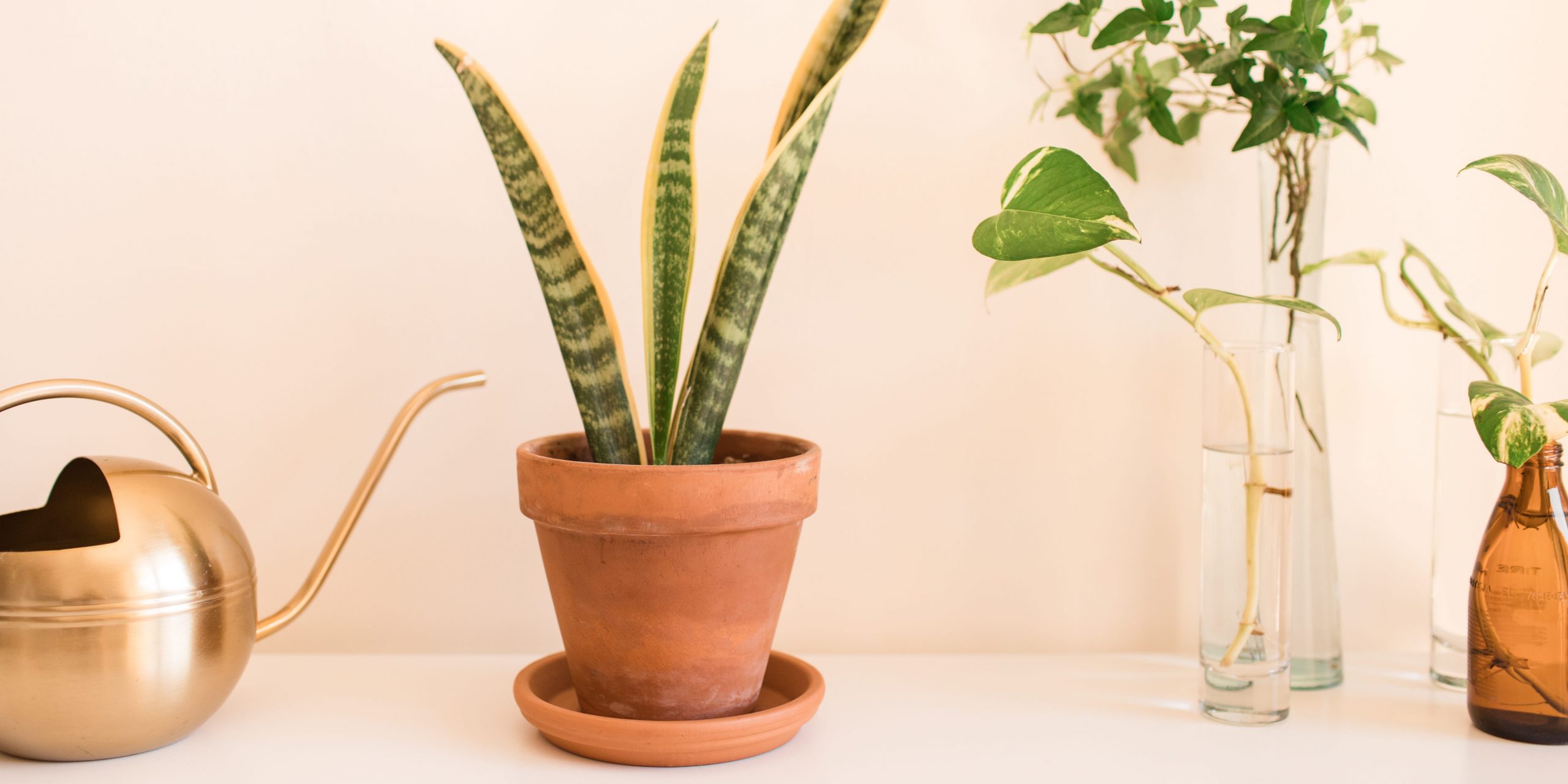
Crystal Bolin Photography/Getty Images
- Snake plants are known for being indestructible, but do require some level of care to grow and thrive.
- They’re relatively low-maintenance and don’t need constant watering or a lot of light.
- The leaves are toxic when consumed, so it may not be the best option if you have pets or young kids.
- Visit Insider’s homepage for more stories.
If you’re notorious for neglecting houseplants, are a new plant parent, or simply want to find something that’s extremely low maintenance, consider adding a snake plant to your collection.
Snake plants – which are native to tropical West Africa – are a wonderful addition to the indoor or outdoor spaces of your home. These spiky, green, and captivating plants come in over 70 variations. They can be tall or short, have flat or curved foliage, and boast variegation in dark green, light green, silver, yellow, or white hues.
How to care for snake plants
Snake plants may be easy to keep alive, but there are conditions that help them thrive, say plant experts Aimee White of @plantingforfun and Andi Xoch, owner of Latinx With Plants in Los Angeles, who offer tips that plant owners should keep in mind.
Water
“Snake plants are what I often refer to as the set it and forget it plant,” says White. So, if you’re the type who forgets to water your plants, the snake plant will be quite forgiving, if not happy that you did so. “Their watering requirements are minimal. They can go for an extended period of time without constant care and still look beautiful.”
Given that snake plants are succulents (because they hold moisture in their leaves), you need to treat it as such and not over-do it with constant or heavy watering. It's fine to give them a thorough watering once the soil is completely dry. If you water while the soil is still moist, you'll encounter problems such as root rot.
The type of soil and pot you use, as well as the amount of light they receive, will also play a role in your watering schedule; in general, consider watering no less than every two weeks.
Finally, don't forget that you may also need to adjust your watering schedule with the changing seasons. For example, during winter months you should reduce watering your plant to once a month.
Soil
Since snake plants are essentially succulents, they prefer loose and well-draining soil. It's recommended to use an all-purpose cactus potting mix. Even if you're using the ideal potting medium for this plant, however, it won't fully thrive unless your pot has the right drainage to allow excess water to run through.
Additionally, when fertilizing your snake plant, make sure to do so once a month during the growing season. Don't fertilize during the winter when most plants go dormant, it'll stress them out and cause more harm than good.
Temperature
If living indoors, snake plants prefer a temperature between 60 to 85 degrees. These plants can tolerate cooler and warmer temperature fluctuations and can handle a myriad of humidity levels. Average household humidity is ideal and they also do well if kept in your bathroom. However, if exposed to temperatures lower than 50 degrees F, your plant may suffer, so make sure to avoid placing them near cool drafts.
If your snake plant lives outdoors - whether in a pot or planted in the ground - make sure it's placed in a relatively shady area. All in all, Dracaena are very adaptable to various living conditions.
Light
These evergreen perennials are possibly the most forgiving when it comes to lighting because they'll do just fine even if you place them in the darkest corner of your home. They'll also thrive in a spot that receives natural bright direct or indirect light. It's important to gauge the light needs of the specific plant you bring home - some will need more bright light to keep growing vibrant foliage.
"I have 15 different varieties spread throughout the house in every lighting situation possible and they all do very well," Aimee says. "The ones in lower light may not grow as quickly as the ones I've placed in direct light but they thrive nonetheless."
While snake plants aren't super fast growers like pothos (Epipremnum aureum) or spider plants (Chlorophytum comosum), they'll always do so faster when placed in spots with more natural light.
Common snake plant problems
No plant parent wants to see insect pests, but snake plants are, unfortunately, prone to mealybugs and spider mite infestations, which causes them to weaken and shed leaves. Snake plants can also develop brown spots and are prone to fungal problems such as southern blight and red leaf spots. To avoid this, make sure you're not only listening to your plant but taking note of how its living conditions are affecting it in both positive and negative ways.
If you notice your snake plant is ever root bound, don't fret - they actually do better that way, unless their rhizomes or roots begin to break through any pots.
Lastly, if you're a pet owner, it's important to remember that these plants are toxic to both cats and dogs. They're also not safe for humans and should be kept out of the reach of children.
Insider's takeaway
Snake plants are the "best recommendation to anyone beginning their plant parent journey. Snake plants are loyal, just as long as you don't overwater," says Xoch.
White - who has well over 200 houseplants - agrees and loves snake plants in particular because they don't require constant attention and can be moved around her home space "wherever a little color is needed."
It's this low-maintenance care - alongside its beautiful appearance - that give both plant pros and newbies reasons to fill their homes with a myriad of Dracaena variations.